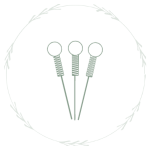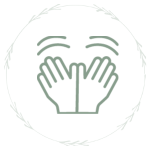Traditional Chinese Veterinary Medicine
Veterinary medicine has grown and diversified substantially over the years leading to countless ways of being able to help our companion animals. This has provided a plethora of options to both pet parents and veterinarians alike to be able to care for and support their pets and patients. Traditional Chinese Veterinary Medicine (TCVM) is just one of these approaches to treatment and is comprised of four predominant modalities that have been used on animals of all kinds for thousands of years. These modalities – also referred to as pillars or branches – include the following:

Acupuncture
Uses specialized needles to stimulate acupoints and allow for the movement of Qi (form of energy) along established meridians throughout the surface of the body. By stimulating the movement of Qi, the body is able to begin the process of healing in various ways.

Herbal Therapy
Using herbs and herbal formulas studied and collected for use over thousands of years, this form of treatment involves the diagnosis of a patient’s TCVM pattern and pairing an appropriate herbal to correct and balance this pattern.

Food Therapy
Treatment entails implementing an assortment of whole foods that are selected based on their thermogenic properties and arranged into recipes that are intended to address and balance a pet or patient’s TCVM pattern.

Tui-na
The art and science of using various hand-based techniques and limb stretching movements on acupuncture points and along meridians to both prevent and treat disease.
TCVM Overview
In 2012, PBS aired a special “Spotlight on Traditional Chinese Veterinary Medicine” that provides an overview of TCVM. This video demonstrates many of the services we offer.

Other Questions
What is a TCVM Examination?
- In the modern veterinary world, conventional medicine uses a thorough “head to tail” physical examination of the entire patient where certain parameters are objectively measured. These measures include things such as temperature, heart rate, respiratory rate, capillary refill time, etc. Other more subjective parameters are also taken into consideration including ambulatory abilities, range of motion, cardiac and respiration quality, haircoat quality, etc. The assessment of these latter measures are highly variable and contingent on the practitioner evaluating the patient.
- Similar to what is performed in conventional or Western examinations, a TCVM practitioner will also examine the patient objectively and subjectively. This examination, also referred to as “Si-zhen”, or the Four Diagnostic Methods, incorporates the heavy use of most of the five senses (sight, sound, smell, and touch) in order to establish an overall sense of a pattern.
- For instance, they can use their:
» Eyes (sight) to evaluate for the color/consistency of ocular or nasal discharges and the appearance of the tongue
» Ears (sound) to assess the patient’s voice
» Nose (smell) to determine if there is a smell associated with the patient’s ears or skin/haircoat
» Hands (touch) to evaluate the patient’s pulse quality - Using an even more specific example: if the patient’s nose is dry, the tongue is red, and there is evidence of Heat and/or Dryness being emitted from other anatomical areas of the patient (i.e. fast pulse and dry paw pads), then the TCVM practitioner may be suspicious of a Heat-based TCVM pattern.
- Contingent on the chronicity and severity of these symptoms, the age of the patient, and the predominant TCVM organ(s) involved - amalgamated with several other factors often expressed/found in the patient’s history - a TCVM Pattern Diagnosis (or Bian Zheng) is then developed.
What is a TCVM Pattern Diagnosis?
- Also referred to as a “Bian Zheng”, or “Pattern Differentiation”, the Pattern Diagnosis was developed by Dr. Zhang Zhong-Jing, an ancient Chinese medical physician who is considered the Father of Traditional Chinese Medicine (TCM), the human counterpart to TCVM.
- One of his many contributions to TCM, Dr. Zhang developed an organized and systematic way of evaluating a patient for underlying disease in the way he performed his physical examination.
- During these physical examinations, the patient(s) were evaluated for changes secondary to common External Pathogens (i.e. Heat, Cold, Dryness, etc.), the chronicity of the clinical signs observed, as well as if the condition was considered Exterior or Interior in relationship to the body.
- Using the information gleaned from these exams, as well as the patient’s history, an overall pattern of bodily disharmony (or disharmonies) was diagnosed; this pattern was referred to as the patient’s Bian Zheng, or Pattern Diagnosis.
- Once established, treatment was focused on returning the patient to a normal, balanced state using each TCVM pillar’s inherent capabilities. For example, if the patient was exhibiting clinical signs of pain – also referred to as Qi/Blood Stagnation – then appropriate acupuncture points, herbal therapy, food therapy, and Tui-na techniques were implemented to “move Qi and Blood”, thereby resolving the Stagnation and returning the patient to a state of normal functional behavior.
- Over time, this same examination and treatment approach was applied to animals by TCVM practitioners and used successfully to address their veterinary patients’ illnesses.
- This same systematic TCVM Pattern Diagnosis system, and the TCVM treatment pillars that are used to provide appropriate therapies, remain in use by TCVM practitioners globally until this day!
